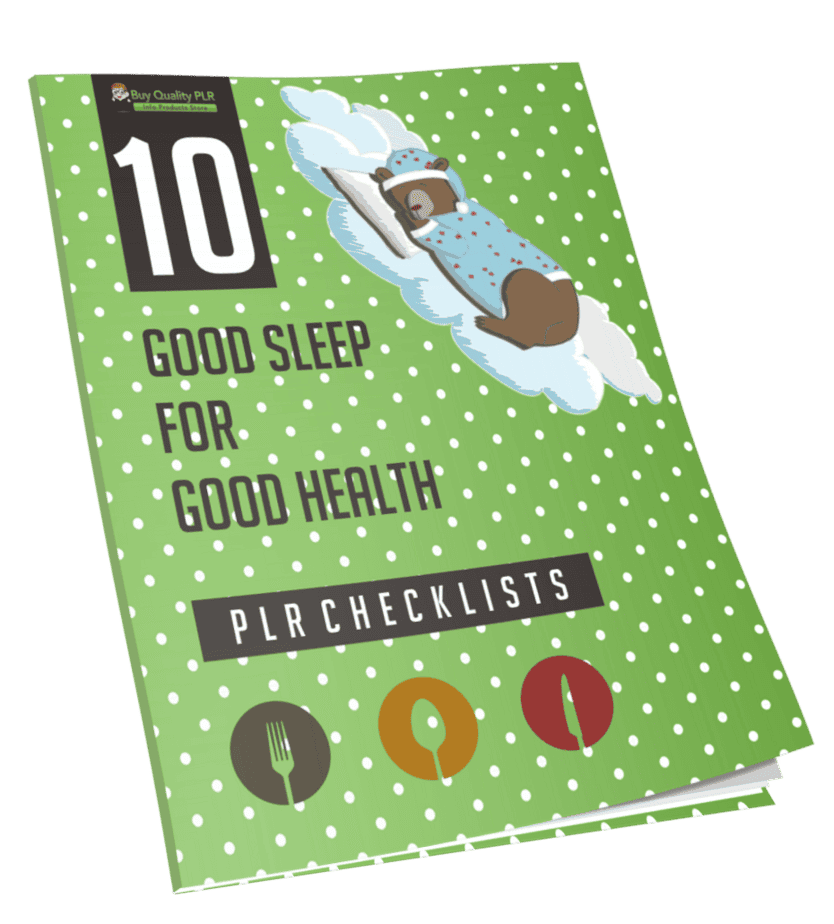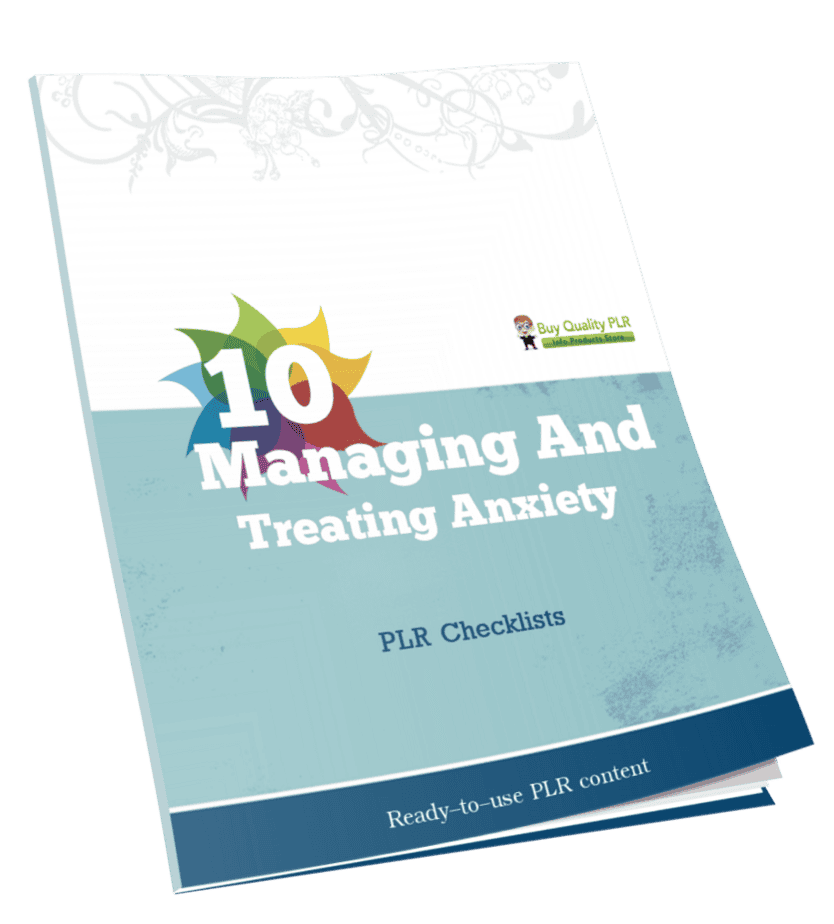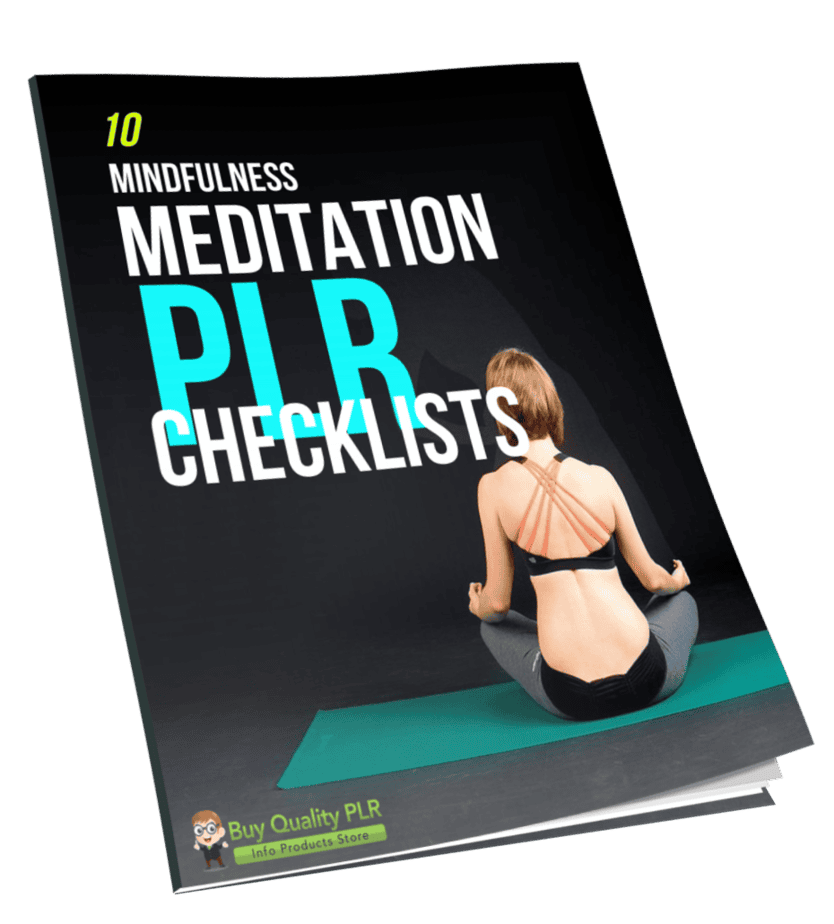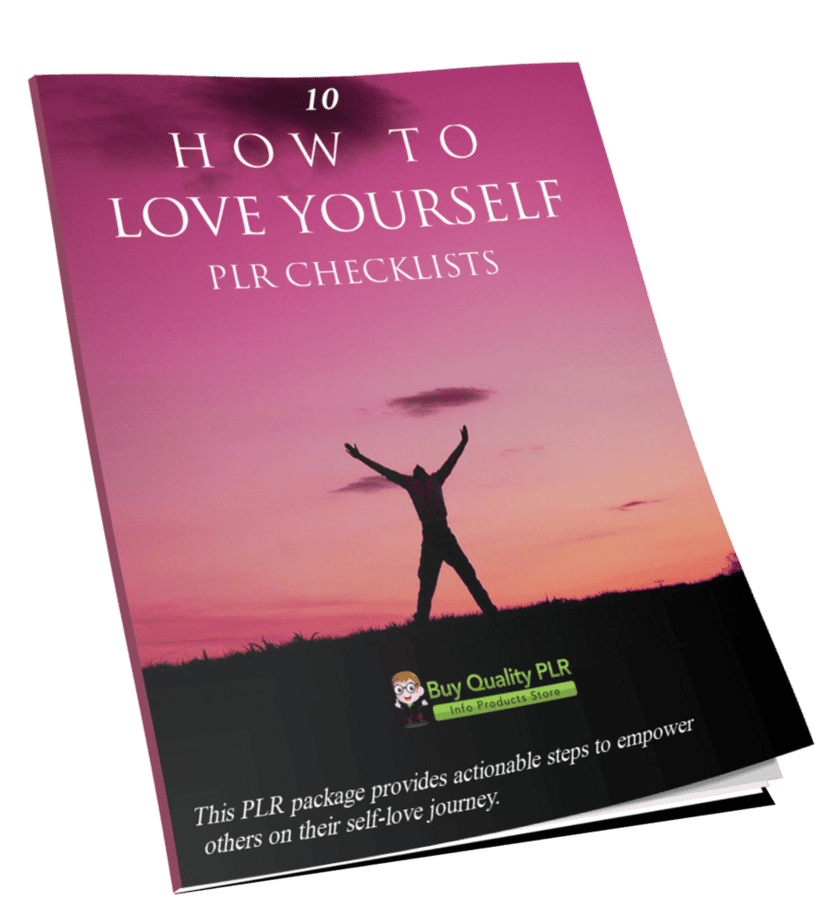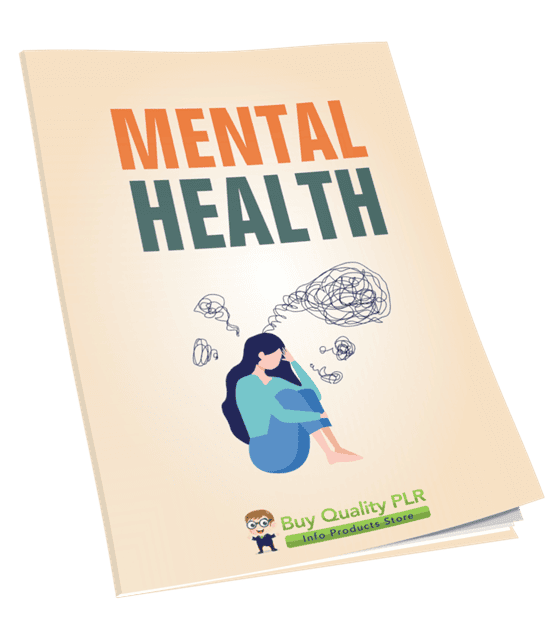
Mental Health PLR Course 21k Words
in Health PLR , Mental Health PLR , Mental Health PLR Ebooks , PLR Checklists , PLR eBooks , PLR eCourses , PLR List Building Reports , Premium PLR , Premium PLR eBooks , Premium PLR Reports , Premium White Label Brandable PLR Coaching Courses , Private Label Rights Products , Self Care PLR , Self Help PLR , Self Help PLR eBooks , Self Improvement PLR , Self Improvement PLR EbooksChoose Your Desired Option(s)
has been added to your cart!
have been added to your cart!
#mentalhealthplr #plrcourse #selfcarecontent #mindsetgrowth #stressrelief #wellnessplr #personaldevelopment #healthplr #mentalwellness #plrcontent
Mental Health PLR Course: Your Path to Emotional Well-Being and Mental Wellness
Unlock Your Full Potential with a Stronger Mindset, Resilience, and Emotional Health!
Are you ready to help others—or yourself—understand mental health and take control of your emotional well-being? The Mental Health PLR Course is here to guide you on a journey of self-care, mental resilience, and long-term wellness. Packed with practical advice, strategies, and helpful tools, this course will empower you or your audience to manage stress, anxiety, and improve overall mental health.
For only $14.99, you get 19,544 words of high-quality content that you can sell, repurpose, or customize to fit your needs.
Presenting…
Mental Health PLR Course 21k Words
What’s Included in the Mental Health PLR Course?
The Mental Health PLR Course is divided into 5 insightful modules, each with practical steps that cover a broad range of mental health topics—from understanding mental health challenges to developing emotional resilience and wellness habits. Every module is easy to follow, engaging, and written in a conversational style that encourages learning and growth.
Module 1: Understanding Mental Health
- What is Mental Health?: Learn the basics of mental health and its importance.
- Common Mental Health Challenges: Understand anxiety, depression, stress, and more.
- Why Mental Health Matters: Dive into how mental health affects relationships, work, and your body.
- Signs You May Need Support: Learn to recognize early signs of mental health struggles.
Module 2: Building Emotional Resilience
- Understanding Resilience: Discover how resilience helps you bounce back from life’s challenges.
- The Power of Positive Thinking: Shift negative self-talk to a growth mindset.
- Coping Strategies for Stress & Anxiety: Explore stress-management techniques that work.
- Practicing Gratitude & Self-Compassion: Learn how gratitude and self-compassion boost mental health.
Module 3: Managing Your Mental Well-Being Daily
- The Role of Sleep, Nutrition & Exercise: Understand the impact of healthy habits on mental clarity and mood.
- Setting Healthy Boundaries: Learn how to protect your mental space and energy.
- Digital Detox & Social Media Awareness: Discover how to minimize social media overload for better mental health.
- Daily Mindfulness & Relaxation Techniques: Explore mindfulness practices like meditation and journaling.
Module 4: Strengthening Relationships for Better Mental Health
- The Impact of Relationships on Mental Health: Learn how your relationships influence your mental well-being.
- Communication Skills for Emotional Well-being: Master the art of expressing your emotions clearly and healthily.
- How to Support a Loved One with Mental Health Struggles: Learn how to help others while maintaining your well-being.
- Letting Go of Toxic Relationships: Discover how to protect your mental health by walking away from negative relationships.
Module 5: Seeking Help & Long-Term Mental Wellness
- When to Seek Professional Help: Learn when it’s time to talk to a therapist or counselor.
- Different Types of Therapy & Treatments: Explore the different therapy options that can support your mental health.
- Breaking the Stigma Around Mental Health: Help challenge harmful mental health stereotypes.
- Creating Your Personal Mental Health Plan: Develop a long-term strategy for maintaining your mental health.
Bonus Features
Mental Health Checklist – 484 Words
A simple checklist that summarizes the key actions for maintaining good mental health. Perfect for quick reference!
Mental Health FAQs – 1,040 Words
A detailed FAQ section to help clarify any doubts regarding mental health, self-care, therapy, and emotional well-being.
Mental Health Sales Page – 608 Words
A ready-to-use sales page to help you market this course quickly and effectively.
How to Use and Profit from the Mental Health PLR Course
This Mental Health PLR Course is packed with useful, high-quality content that you can use in several ways to generate revenue. Here are some profitable ideas:
1. Sell the Course As-Is
You can sell the entire course as-is, either digitally or in physical formats, and offer it as a complete resource for anyone looking to improve their mental health.
2. Break the Course into Smaller Reports
Each module can be broken down into smaller, digestible reports that can be sold individually for $10-$20 each. For example, a “Coping Strategies for Stress” report can be sold as a stand-alone product.
3. Bundle the Course with Other Wellness Content
Combine this course with other wellness-related PLR content (e.g., fitness, diet, or self-improvement) to create a high-ticket product bundle. You could sell the bundle for $47-$97 to offer even more value to your customers.
4. Set Up a Membership Site
Turn this course into an ongoing membership site where subscribers receive continuous mental health tips, advice, and tools. Offer monthly membership fees to generate passive income.
5. Create an e-Class
Convert this course into a multiple-week e-class, adding interactive elements like assignments, quizzes, and discussion forums. This can be priced between $297-$497 for a premium learning experience.
6. Create Physical Products
Transform the Mental Health PLR Course into physical products, such as workbooks, planners, or journals, and sell them for premium prices.
7. Use as a Lead Magnet
Offer a free sample of the course or a section of it as a lead magnet, then upsell the full course or related products to your audience.
What You Can Do with This Course
Permissions:
- Sell the content as-is or make minor tweaks to make it your own.
- Break it into smaller reports and sell them for $10-$20 each.
- Bundle the content with other related PLR content to create a larger product and sell it for $47-$97.
- Set up a membership site to offer ongoing support and create monthly residual payments.
- Convert it into a multi-week e-class for $297-$497.
- Create physical products (e.g., workbooks or planners) and sell them for premium prices.
- Use the content for lead magnets to build your email list and drive sales.
Restrictions:
- You cannot pass on PLR rights to your customers.
- You may not offer 100% commission—the maximum commission for affiliates is 75%.
- The full materials cannot be given away for free—they must be sold or excerpted.
- Cannot add the course content to any part of an existing customer order that does not require an additional purchase.
Get Instant Access to the Mental Health PLR Course for Just $14.99!
The Mental Health PLR Course offers a comprehensive, easy-to-follow approach to understanding mental health and promoting well-being. With 19,544 words of high-quality content, this course provides everything you need to empower yourself or others in managing mental health.
For just $14.99, you get lifetime access to this done-for-you PLR course that you can customize, sell, or use in a variety of ways to create multiple revenue streams.
Take Control of Your Mental Health Today!
Whether you’re selling it, teaching it, or learning it, Mental Health PLR Course is your comprehensive guide to better emotional health. Let’s start the journey to well-being together—your healthier mind is just one step away!
has been added to your cart!
have been added to your cart!
Here A Sample of Mental Health PLR Course
This course is designed to help you build a solid foundation in mental health, develop self-awareness, and adopt strategies to manage stress, anxiety, and emotional well-being. Take it step by step, and remember—progress is more important than perfection!
Module 1: Understanding Mental Health
📌 Before we dive into strategies, let’s understand what mental health really is!
Step 1: What is Mental Health?
Introduction
Mental health is often misunderstood as simply the absence of mental illness, but it is much more than that. It encompasses our emotional, psychological, and social well-being, affecting how we think, feel, and behave in daily life. Mental health influences how we handle stress, relate to others, and make decisions. Just like physical health, maintaining good mental health requires awareness, effort, and consistent care.
In this step, we will explore:
- What mental health really means
- The key components of mental well-being
- Why mental health is equally as important as physical health
- How a healthy mind contributes to a fulfilling life
By the end of this step, you will have a deeper understanding of mental health and be better equipped to recognize its importance in everyday life.
1. Understanding Mental Health Beyond Illness
Mental health is often associated with mental illness, but in reality, it exists on a spectrum. Good mental health does not mean never feeling sad, anxious, or stressed—it means having the ability to manage emotions, cope with challenges, and maintain balance in life.
A person with good mental health:
✔️ Has a positive sense of self-worth and confidence
✔️ Can manage stress effectively and adapt to change
✔️ Maintains healthy relationships and communicates well
✔️ Experiences a range of emotions but does not feel overwhelmed by them
✔️ Makes rational decisions and engages in productive activities
On the other hand, someone struggling with poor mental health may:
❌ Feel persistently sad, anxious, or emotionally numb
❌ Have difficulty coping with stress and daily responsibilities
❌ Struggle with self-doubt, low confidence, or feelings of worthlessness
❌ Find it hard to form or maintain relationships
❌ Experience a lack of motivation, energy, or concentration
Good mental health does not mean always being happy. It means having the emotional resilience to handle life’s ups and downs while maintaining a sense of purpose and control.
2. The Three Pillars of Mental Well-being
Mental health is influenced by three key aspects:
a) Emotional Well-being
- The ability to manage emotions in a constructive way
- Recognizing and expressing feelings without becoming overwhelmed
- Finding joy in daily activities and experiencing a sense of gratitude
Example: Someone with strong emotional well-being can acknowledge stress at work without letting it affect their personal relationships. They might practice mindfulness or deep breathing techniques to stay calm.
b) Psychological Well-being
- Having a balanced and realistic view of oneself
- Developing problem-solving skills and decision-making abilities
- Engaging in activities that promote mental stimulation and growth
Example: A person with good psychological well-being challenges negative thoughts and replaces them with constructive thinking patterns. Instead of saying, “I’ll never succeed,” they reframe it as, “I can improve with practice.”
c) Social Well-being
- Building and maintaining positive relationships
- Having a sense of belonging and connection with others
- Developing effective communication and conflict-resolution skills
Example: A socially healthy person maintains a support network of family and friends and seeks help when needed. They know when to set boundaries in unhealthy relationships.
Each of these three pillars is interconnected—when one is weakened, it affects the others. For example, prolonged isolation (social well-being) can lead to feelings of loneliness (emotional well-being) and impact decision-making (psychological well-being).
3. Why Mental Health is Just as Important as Physical Health
In many cultures, physical health is prioritized over mental health, often leading to neglect of emotional and psychological well-being. However, mental health and physical health are deeply connected—poor mental health can lead to physical health problems, and vice versa.
How Mental Health Affects Physical Health
- Chronic stress can lead to high blood pressure, heart disease, and digestive issues
- Anxiety and depression can weaken the immune system, making the body more susceptible to illness
- Poor sleep due to mental distress can contribute to fatigue, cognitive decline, and hormonal imbalances
How Physical Health Supports Mental Well-being
- Regular exercise boosts mood by increasing endorphins and reducing stress hormones
- A balanced diet supports brain function and energy levels, reducing mood swings
- Quality sleep allows for emotional regulation and mental clarity
A holistic approach to health recognizes that the mind and body work together. Taking care of mental health is not a luxury—it is a necessity for a balanced life.
4. How to Cultivate a Healthy Mind Daily
Building and maintaining mental health requires regular practices—just like maintaining physical health. Here are some ways to actively take care of your mental well-being:
✔️ Practice Self-Awareness: Take time to reflect on your thoughts, emotions, and behaviors. Journaling or mindfulness exercises can help identify stress triggers and emotional patterns.
✔️ Manage Stress Effectively: Learn techniques such as deep breathing, meditation, and time management to reduce daily stress.
✔️ Stay Connected: Engage with friends, family, and support groups. Talking to someone about your feelings can help process emotions and prevent isolation.
✔️ Set Healthy Boundaries: Protect your mental space by learning to say no to situations that drain your energy or cause unnecessary stress.
✔️ Engage in Activities That Bring Joy: Hobbies, creative activities, and physical exercise can boost mood and mental clarity.
✔️ Seek Professional Help When Needed: Just like visiting a doctor for physical health concerns, seeking a therapist or counselor when struggling mentally is a proactive and positive step.
Final Thoughts
Mental health is an ongoing process that requires attention and care. It is not about achieving a “perfect” state of mind but about finding balance and developing strategies to navigate life’s challenges.
By understanding what mental health truly means, you are already taking an important first step toward improving your well-being. In the next steps, we will explore how to build emotional resilience, manage stress, and develop habits that support a strong and healthy mind.
Would you like to move forward to the next step, or do you have any questions before continuing?
Step 2: Common Mental Health Challenges
Introduction
Mental health challenges are more common than many people realize. In fact, millions of individuals worldwide experience conditions such as anxiety, depression, and chronic stress at some point in their lives. However, misconceptions and stigma often prevent open discussions and proper understanding of these issues.
In this step, we will explore:
- What anxiety, depression, and stress actually mean
- How to recognize the signs and symptoms of these conditions
- The differences between temporary emotional struggles and diagnosable mental health disorders
- Common myths and misunderstandings about mental health challenges
By the end of this step, you will have a clearer perspective on mental health conditions, helping you recognize them in yourself or others and take appropriate action when needed.
1. Understanding Anxiety, Depression, and Stress
a) What is Anxiety?
Anxiety is a natural response to stress or danger—it is the body’s way of staying alert to potential threats. However, when anxiety becomes persistent, overwhelming, or interferes with daily life, it may be classified as an anxiety disorder.
Symptoms of Anxiety Disorders:
✔️ Excessive worry, even when there is no immediate danger
✔️ Restlessness, feeling “on edge” or unable to relax
✔️ Rapid heartbeat, sweating, trembling, or shortness of breath
✔️ Difficulty concentrating due to racing thoughts
✔️ Avoiding situations that trigger anxiety
Anxiety disorders come in different forms, including generalized anxiety disorder (GAD), social anxiety disorder, panic disorder, and phobias.
📌 Example: A person with social anxiety might feel extreme nervousness before speaking in a meeting, experiencing nausea and a racing heart.
Myth: “Anxiety is just overthinking, and people should just relax.”
Truth: Anxiety is a real mental health condition that involves physical, emotional, and cognitive symptoms beyond a person’s control.
b) What is Depression?
Depression is more than just feeling sad. It is a serious mood disorder that affects thoughts, emotions, and daily activities. It can be temporary (situational depression) or chronic (clinical depression).
Symptoms of Depression:
✔️ Persistent sadness or feelings of emptiness
✔️ Loss of interest in activities once enjoyed
✔️ Fatigue, low energy, and sleep disturbances (insomnia or oversleeping)
✔️ Changes in appetite and weight
✔️ Feelings of hopelessness, guilt, or worthlessness
✔️ Difficulty concentrating or making decisions
Depression can be triggered by biological factors, traumatic experiences, prolonged stress, or medical conditions.
📌 Example: A person experiencing depression might withdraw from social activities, struggle to complete tasks at work, and feel emotionally numb.
Myth: “Depression is just being lazy or weak.”
Truth: Depression is a medical condition caused by changes in brain chemistry, not a sign of weakness.
c) What is Stress?
Stress is the body’s response to challenges or demands. It can be positive in short bursts (e.g., preparing for an exam), but chronic stress can lead to severe physical and mental health problems.
Symptoms of Chronic Stress:
✔️ Constant tension, irritability, or frustration
✔️ Headaches, muscle pain, or digestive problems
✔️ Difficulty sleeping or feeling exhausted despite rest
✔️ Increased use of alcohol, drugs, or unhealthy coping mechanisms
📌 Example: A person experiencing chronic stress due to work pressure may develop high blood pressure and have trouble sleeping.
Myth: “Stress is just part of life, and there’s nothing you can do about it.”
Truth: While stress is common, learning stress management techniques can reduce its long-term impact on mental and physical health.
2. Temporary Emotional Struggles vs. Mental Health Disorders
Not all mental health struggles are classified as disorders. It is important to understand the difference between temporary emotional responses and diagnosable conditions.
| Temporary Emotional Reactions | Mental Health Disorders |
| Short-lived sadness after a breakup | Persistent depression lasting weeks or months |
| Nervousness before a big presentation | Daily, uncontrollable anxiety affecting work and social life |
| Stress from a deadline | Chronic stress causing physical symptoms like headaches and insomnia |
📌 Key takeaway: Feeling sad, anxious, or stressed occasionally is normal. However, if these feelings persist, intensify, or interfere with daily life, professional help may be needed.
3. Common Mental Health Myths and Facts
There are many misconceptions about mental health conditions, which contribute to stigma and prevent people from seeking help.
🔸 Myth: “People with mental health conditions are dangerous.”
✔️ Fact: The majority of individuals with mental illnesses are not violent. They are more likely to be victims of violence than perpetrators.
🔸 Myth: “Mental health problems only affect certain people.”
✔️ Fact: Mental health conditions can affect anyone, regardless of age, gender, culture, or background.
🔸 Myth: “Therapy is only for people with severe mental illness.”
✔️ Fact: Therapy is beneficial for anyone facing stress, relationship issues, or personal growth challenges—not just for severe conditions.
🔸 Myth: “If you are mentally strong, you don’t need help.”
✔️ Fact: Seeking support is a sign of strength, not weakness. Just like seeing a doctor for a physical illness, getting mental health care is important for overall well-being.
4. What Can You Do? Taking the Next Steps
Understanding mental health challenges is the first step in addressing them. Here are some ways to take action:
✔️ Educate Yourself and Others: Learn more about mental health conditions and share accurate information to combat stigma.
✔️ Recognize Symptoms Early: Pay attention to changes in mood, energy levels, or behavior—both in yourself and in those around you.
✔️ Practice Self-Care: Engage in activities that support mental well-being, such as exercise, meditation, and maintaining a healthy lifestyle.
✔️ Seek Professional Help When Needed: Therapists, counselors, and support groups can provide guidance and treatment options.
✔️ Be Supportive: If someone you know is struggling, offer a listening ear, encourage them to seek help, and avoid judgment.
Final Thoughts
Mental health challenges like anxiety, depression, and stress are common, but they do not define a person. Understanding these conditions helps create a more compassionate and informed society.
In the next step, we will dive deeper into building resilience and coping strategies for mental well-being. Would you like to move forward, or do you have any questions before we continue?
Step 3: Why Mental Health Matters
Introduction
Mental health is not just about avoiding mental illness—it is about achieving a balanced, fulfilling life. The state of our mental well-being impacts how we think, feel, and behave. It affects:
- Our relationships with family, friends, and colleagues
- Our work performance and ability to manage responsibilities
- Our daily decision-making, motivation, and productivity
- Our physical health, including heart health, immune function, and overall well-being
Ignoring mental health can lead to severe consequences, including burnout, chronic stress, and even physical illnesses. In this step, we will explore:
- The mind-body connection and how mental health influences physical health
- The impact of mental well-being on work, relationships, and social life
- The long-term effects of poor mental health if left unaddressed
- Why investing in mental health is essential for overall life satisfaction
By the end of this step, you will have a deeper appreciation for the importance of mental health and be more motivated to prioritize it in your daily life.
1. The Mind-Body Connection: How Mental Health Affects Physical Health
Mental and physical health are deeply interconnected. Poor mental health can lead to physical problems, while physical illnesses can contribute to mental distress.
a) Stress and Its Impact on the Body
Chronic stress can trigger the body’s “fight or flight” response, releasing stress hormones like cortisol and adrenaline. While this response is useful in short bursts, prolonged activation can lead to:
✔️ High blood pressure and heart disease
✔️ Weakened immune system, making you more susceptible to illness
✔️ Muscle tension, headaches, and chronic pain
✔️ Sleep disturbances and fatigue
📌 Example: A person under constant work pressure may experience frequent migraines and digestive issues due to prolonged stress.
b) The Link Between Mental Health and Chronic Illness
Research shows that poor mental health increases the risk of chronic diseases, including:
✔️ Heart Disease – Depression and anxiety can contribute to high blood pressure and heart attacks.
✔️ Diabetes – Chronic stress can lead to poor dietary choices and weight gain.
✔️ Weakened Immune System – Constant worry and stress reduce the body’s ability to fight infections.
📌 Example: A person struggling with depression may lack the motivation to exercise or eat nutritious meals, which can lead to obesity and diabetes over time.
Key takeaway: Mental and physical health cannot be separated—taking care of your mind is just as important as taking care of your body.
2. Mental Health and Relationships: The Social Impact
Your mental well-being affects how you interact with others, from family and friends to colleagues and acquaintances.
a) How Mental Health Influences Personal Relationships
When struggling with poor mental health, people may experience:
✔️ Increased irritability, mood swings, or withdrawal from loved ones
✔️ Difficulty expressing emotions or maintaining deep connections
✔️ Feelings of loneliness and isolation
📌 Example: A person dealing with anxiety may avoid social gatherings, making friends feel neglected or distant.
Key takeaway: Good mental health allows for stronger, healthier relationships, while untreated mental health issues can create emotional distance and misunderstandings.
b) Mental Health in the Workplace: Productivity and Career Growth
A healthy mind is crucial for professional success. Mental health challenges can affect:
✔️ Productivity – Difficulty concentrating, making decisions, or meeting deadlines
✔️ Communication – Struggles with teamwork, misunderstandings, or conflicts with colleagues
✔️ Job Satisfaction – Feeling overwhelmed, unmotivated, or burned out
📌 Example: An employee with untreated chronic stress may experience frequent absenteeism, struggle with deadlines, or have difficulty working with a team.
Key takeaway: Prioritizing mental health at work leads to higher efficiency, better collaboration, and greater career success.
3. The Long-Term Effects of Poor Mental Health
Ignoring mental health issues does not make them go away. Over time, untreated mental health problems can lead to:
✔️ Substance Abuse: People may turn to alcohol, drugs, or unhealthy habits to cope.
✔️ Chronic Fatigue and Burnout: Constant mental exhaustion can lead to total physical and emotional breakdown.
✔️ Self-Isolation and Loneliness: The longer mental health issues go untreated, the harder it becomes to maintain relationships.
✔️ Suicidal Thoughts and Self-Harm: In severe cases, untreated mental illness can lead to self-destructive behavior.
📌 Example: A person suffering from depression for years without seeking help may eventually lose interest in all aspects of life, harming both their personal and professional future.
Key takeaway: Addressing mental health issues early prevents long-term consequences and leads to a more fulfilling life.
4. Why Investing in Mental Health is Essential
Taking care of mental health is not a luxury—it is a necessity for a happy and balanced life. Here are some proactive steps you can take:
✔️ Practice Mindfulness and Self-Care – Meditation, journaling, exercise, and hobbies help maintain mental well-being.
✔️ Build Strong Social Connections – Regularly engage with friends and loved ones for emotional support.
✔️ Set Healthy Boundaries – Avoid overcommitting, say no when needed, and prioritize rest.
✔️ Seek Professional Help When Needed – Therapy, counseling, and mental health resources are available worldwide.
📌 Example: Someone struggling with work-related anxiety can set clear work-life boundaries, take breaks, and talk to a therapist to develop healthy coping strategies.
Key takeaway: Investing in mental health leads to better relationships, improved work performance, and overall life satisfaction.
Final Thoughts
Mental health matters because it affects every aspect of life—your body, relationships, career, and overall happiness. Prioritizing mental well-being is just as important as maintaining physical health.
In the next step, we will explore practical strategies to improve and maintain mental health for long-term well-being.
Would you like to move forward, or do you have any thoughts or reflections on today’s lesson?
Step 4: Signs You May Need Support
Introduction
Everyone experiences stress, sadness, and frustration from time to time. However, when these feelings become overwhelming, persistent, or start interfering with daily life, it may be a sign that you need support. Recognizing early warning signs of mental distress allows you to seek help before things escalate.
Mental health challenges do not always appear suddenly. In many cases, they develop gradually, making them easy to ignore or dismiss. By understanding the common emotional, behavioral, and physical symptoms, you can take proactive steps to maintain well-being and prevent long-term mental health issues.
What You’ll Learn in This Step:
✔️ Recognizing emotional and psychological signs of mental distress
✔️ Identifying behavioral changes that indicate mental health struggles
✔️ Understanding physical symptoms linked to poor mental health
✔️ Knowing when to seek professional help
By the end of this step, you will have a clear understanding of what to look for and feel more empowered to take action for yourself or support others who may be struggling.
1. Emotional and Psychological Warning Signs
Your thoughts and emotions are key indicators of your mental well-being. If you frequently experience the following, it may be time to seek help:
a) Persistent Feelings of Sadness, Hopelessness, or Emptiness
Feeling down occasionally is normal, but if sadness lasts for weeks or months, it could be a sign of depression.
✔️ Feeling numb or disconnected from life
✔️ Loss of interest in activities once enjoyed
✔️ Difficulty finding motivation to complete daily tasks
📌 Example: Someone who once enjoyed socializing may start avoiding friends and family, preferring to stay alone.
b) Increased Anxiety or Worrying
Everyone worries sometimes, but excessive anxiety can be a sign of a deeper issue. Signs of chronic anxiety include:
✔️ Constant fear or nervousness, even when nothing is wrong
✔️ Overthinking and imagining worst-case scenarios
✔️ Feeling restless, easily irritated, or overwhelmed
📌 Example: A person may struggle to sleep at night because they are constantly worrying about things they cannot control.
c) Difficulty Concentrating or Making Decisions
If you find it hard to focus, remember things, or make decisions, it could be a sign of stress, anxiety, or depression.
✔️ Trouble focusing on work or school
✔️ Feeling mentally exhausted, even after resting
✔️ Struggling to complete simple tasks
📌 Example: A student who once performed well in school may suddenly start forgetting assignments or missing deadlines.
2. Behavioral Changes That Indicate a Need for Support
Changes in behavior can be a strong indicator that someone is struggling with their mental health.
a) Withdrawal from Social Activities
Avoiding social interactions, even with close family and friends, can be a warning sign of depression or anxiety.
✔️ Frequently canceling plans or avoiding phone calls
✔️ Feeling uncomfortable or overwhelmed in social settings
✔️ Lack of interest in hobbies, relationships, or work
📌 Example: A person who used to enjoy weekend outings may start making excuses to stay home instead.
b) Increased Irritability or Mood Swings
Uncharacteristic anger, frustration, or emotional outbursts can signal that something is wrong.
✔️ Becoming easily annoyed by small things
✔️ Experiencing sudden emotional ups and downs
✔️ Feeling like emotions are out of control
📌 Example: A normally calm person may suddenly snap at loved ones over minor issues.
c) Changes in Sleep or Appetite
Disruptions in eating and sleeping habits can be early indicators of mental distress.
✔️ Sleeping too much or struggling with insomnia
✔️ Loss of appetite or emotional overeating
✔️ Feeling fatigued, even after a full night’s sleep
📌 Example: A person may find themselves binging unhealthy food late at night or skipping meals entirely due to stress.
3. Physical Symptoms of Mental Health Struggles
Mental health issues often manifest physically, affecting the body in unexpected ways.
a) Unexplained Aches, Pains, or Fatigue
Chronic stress and anxiety can cause physical discomfort without any medical cause.
✔️ Frequent headaches, muscle pain, or stomach aches
✔️ Feeling physically drained despite resting
✔️ Tension in the shoulders, neck, or jaw
📌 Example: A person with extreme work stress may experience constant headaches and back pain.
b) Increased Use of Unhealthy Coping Mechanisms
To escape mental distress, some people turn to negative coping strategies.
✔️ Overuse of alcohol, cigarettes, or drugs
✔️ Spending excessive time on social media or video games to avoid reality
✔️ Engaging in self-destructive behavior
📌 Example: A person experiencing chronic anxiety may start drinking heavily to feel relaxed.
4. When to Seek Professional Help
Recognizing signs of mental health struggles is the first step—taking action is the next. Here’s when you should consider professional support:
✔️ Your symptoms last for more than two weeks and affect daily life
✔️ You feel unable to manage stress or emotions on your own
✔️ Your relationships, work, or school performance suffer due to mental distress
✔️ You have thoughts of self-harm, hopelessness, or suicide
📌 Example: A person feeling overwhelmed and emotionally exhausted may benefit from therapy, where they can learn healthy coping mechanisms.
Where to Find Support:
✔️ Therapists and Counselors: Professionals trained to help with mental health challenges
✔️ Support Groups: Connecting with others facing similar struggles
✔️ Hotlines and Helplines: Immediate crisis support available globally
Key takeaway: Seeking help is not a sign of weakness—it’s a sign of strength. Professional support can help you regain control and improve your quality of life.
Final Thoughts
Recognizing early warning signs of mental health struggles allows you to take action before they worsen. Whether you notice changes in yourself or someone you care about, remember:
✔️ Mental health struggles are common and treatable
✔️ Ignoring symptoms can lead to long-term consequences
✔️ Seeking help is a step toward a healthier, happier life
Next Steps
In the next lesson, we will explore practical self-care techniques and mental health strategies that can help you build resilience and improve well-being.
Would you like to discuss anything from today’s lesson, or are you ready to move forward?
We’re also giving these extra bonuses
Mental Health – Checklist
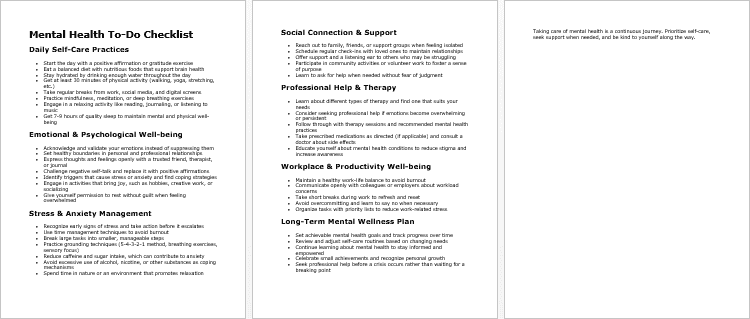
Mental Health – FAQs

Mental Health – Salespage Content

Package Details:
Word Count: 19 544 Words
Number of Pages: 110
Mental Health – Bonus Content
Checklist
Word Count: 484 words
FAQs
Word Count: 1040 words
Salespage Content
Word Count: 608 words
Total Word Count: 20 924 Words
Your PLR License Terms
PERMISSIONS: What Can You Do With These Materials?
Sell the content basically as it is (with some minor tweaks to make it “yours”).
If you are going to claim copyright to anything created with this content, then you must substantially change at 75% of the content to distinguish yourself from other licensees.
Break up the content into small portions to sell as individual reports for $10-$20 each.
Bundle the content with other existing content to create larger products for $47-$97 each.
Setup your own membership site with the content and generate monthly residual payments!
Take the content and convert it into a multiple-week “eclass” that you charge $297-$497 to access!
Use the content to create a “physical” product that you sell for premium prices!
Convert it to audios, videos, membership site content and more.
Excerpt and / or edit portions of the content to give away for free as blog posts, reports, etc. to use as lead magnets, incentives and more!
Create your own original product from it, set it up at a site and “flip” the site for megabucks!
RESTRICTIONS: What Can’t You Do With These Materials?
To protect the value of these products, you may not pass on the rights to your customers. This means that your customers may not have PLR rights or reprint / resell rights passed on to them.
You may not pass on any kind of licensing (PLR, reprint / resell, etc.) to ANY offer created from ANY PORTION OF this content that would allow additional people to sell or give away any portion of the content contained in this package.
You may not offer 100% commission to affiliates selling your version / copy of this product. The maximum affiliate commission you may pay out for offers created that include parts of this content is 75%.
You are not permitted to give the complete materials away in their current state for free – they must be sold. They must be excerpted and / or edited to be given away, unless otherwise noted. Example: You ARE permitted to excerpt portions of content for blog posts, lead magnets, etc.
You may not add this content to any part of an existing customer order that would not require them to make an additional purchase. (IE You cannot add it to a package, membership site, etc. that customers have ALREADY paid for.)
Related Products That May Interest You

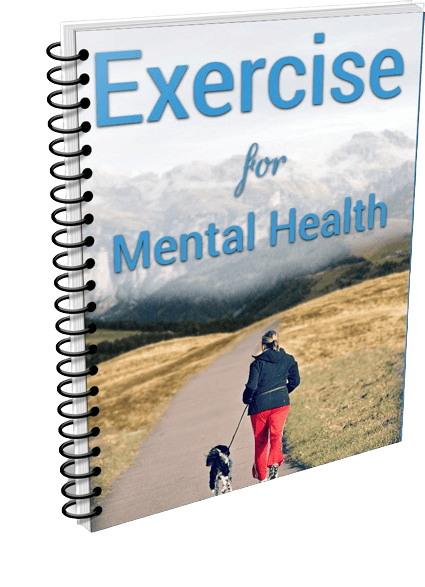
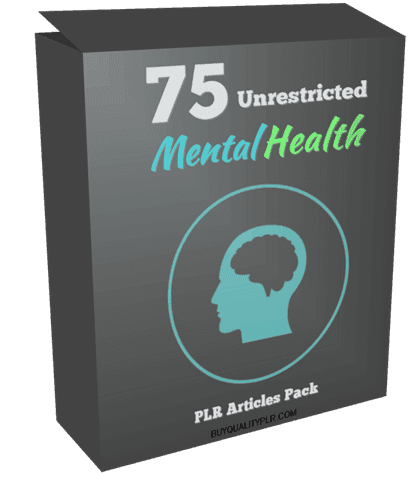
Share Now!

